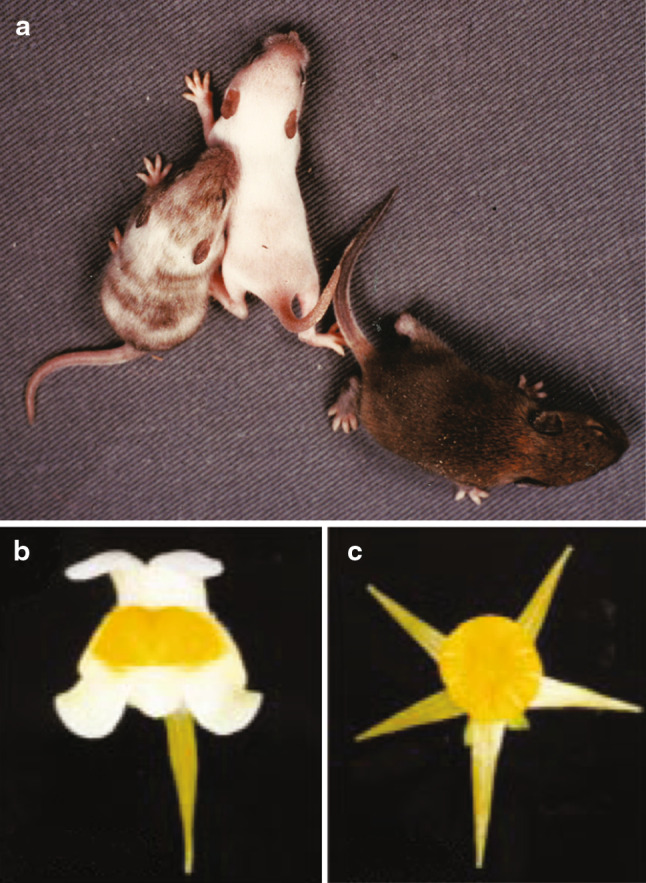Fig. 1.

Examples of heritable epigenetic phenomena. a Neonatal mice carrying a mutation of the X-linked Atp7a (ATPase, Cu++ transporting, alpha polypeptide) gene have a low activity of tyrosinase, a copper-dependent enzyme that is required for melanin production. XY males are depigmented (centre) relative to pigmented, wild-type XY males or XX females (right). Random X chromosome inactivation (XCI) and clonal expansion in XX embryos carrying one wild-type and one mutant allele lead to depigmented and pigmented patches, as seen in the mottled female (left) [52]. Reprinted from [53]. b Toadflax wild-type flower, c toadflax peloric flower. The variant peloric flower phenotype, heritable through generations, cosegregates with DNA methylation and inactivation of the cycloidea gene. Here, methylation is probably conferring gene silencing, and maintaining this state through cell division. This type of gene inactivation, involving no change in DNA sequence, is termed an ‘epimutation’ [54]. Figures of toadflax flowers [44] reproduced with the permission of Macmillan Publishers, Ltd
